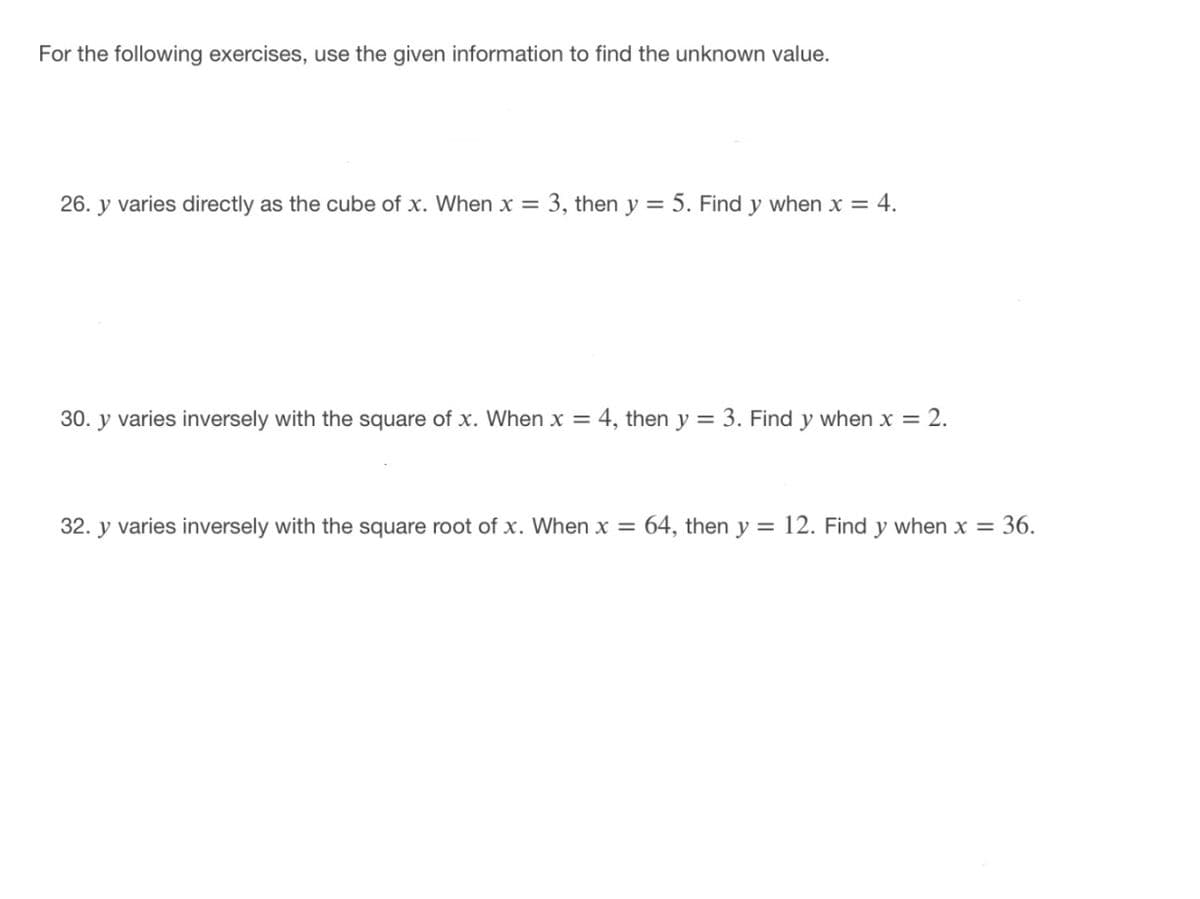For the following exercises, use the given information to find the unknown value. 26. y varies directly as the cube of x. When x = 3, then y = 5. Find y when x = 4. 30. y varies inversely with the square of x. When x = 4, then y = 3. Find y when x = 2. 32. y varies inversely with the square root of x. When x = 64, then y = 12. Find y when x = 36.

When y is directly proportional to x ,then ,
Proportionality sign can be removed by a proportionality constant.
Therefore, y = k x, where k is a proportionality constant.
Value of k can be calculated by given information about relation.
When y is inversely proportional to x, then,
Proportionality sign can be removed by a proportionality constant.
Therefore, y = k *, where k is a proportionality constant.
Value of k can be calculated by given information about relation.
Trending now
This is a popular solution!
Step by step
Solved in 4 steps with 3 images




